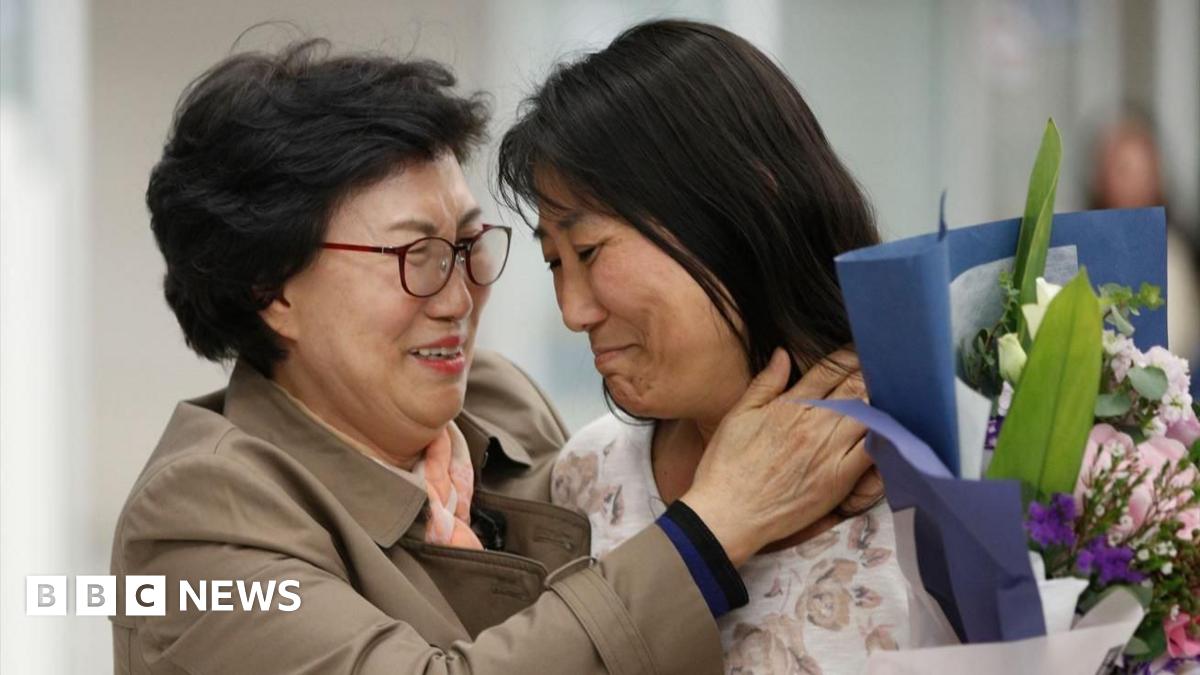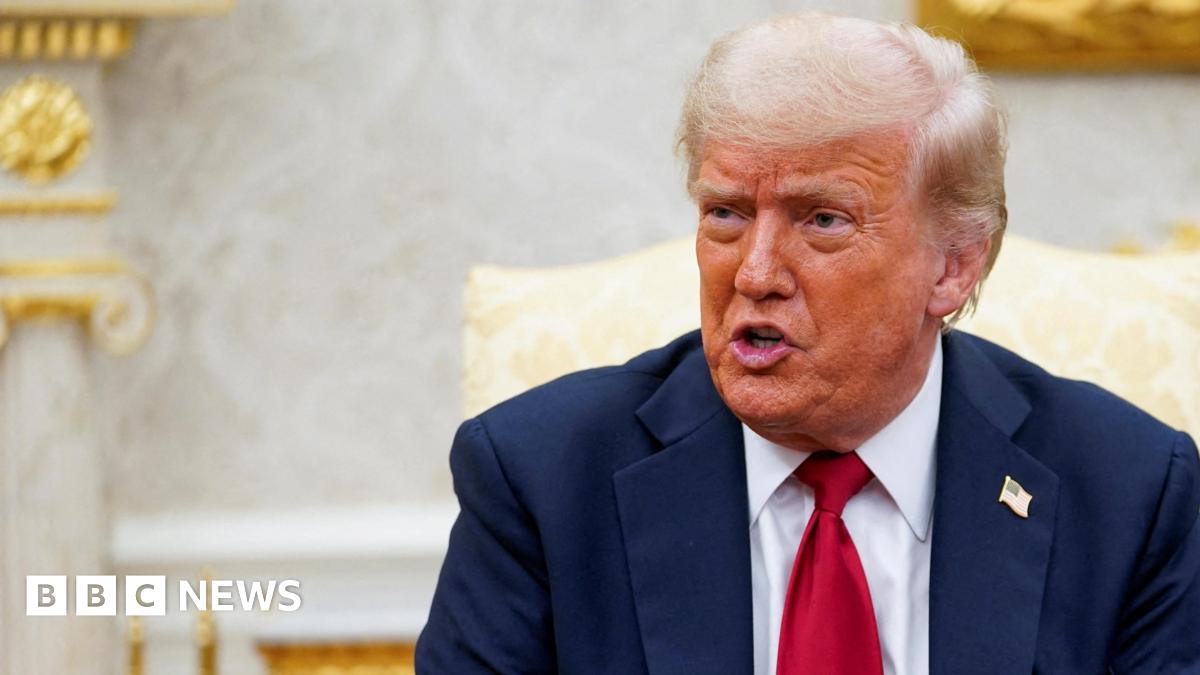South Korea's Overseas Adoption Practices: A Historical Examination

Welcome to your ultimate source for breaking news, trending updates, and in-depth stories from around the world. Whether it's politics, technology, entertainment, sports, or lifestyle, we bring you real-time updates that keep you informed and ahead of the curve.
Our team works tirelessly to ensure you never miss a moment. From the latest developments in global events to the most talked-about topics on social media, our news platform is designed to deliver accurate and timely information, all in one place.
Stay in the know and join thousands of readers who trust us for reliable, up-to-date content. Explore our expertly curated articles and dive deeper into the stories that matter to you. Visit Best Website now and be part of the conversation. Don't miss out on the headlines that shape our world!
Table of Contents
South Korea's Overseas Adoption Practices: A Historical Examination
South Korea's history of overseas adoption is a complex and often heartbreaking topic, marked by periods of rapid growth, ethical concerns, and ongoing efforts towards reform. For decades, thousands of Korean children found new homes abroad, leaving behind a legacy that continues to shape discussions about international adoption, child welfare, and national identity. This article delves into the historical context, examining the key drivers, ethical controversies, and the evolving landscape of adoption practices in South Korea.
The Post-War Boom and the Rise of Overseas Adoption:
The immediate post-Korean War era (1950s-1960s) witnessed a surge in the number of children available for adoption. Poverty, societal stigma surrounding unmarried mothers, and a lack of robust domestic child welfare systems contributed to a climate where international adoption became a seemingly viable solution. Many Western countries, particularly the United States, Canada, and European nations, actively sought to adopt children, leading to a large-scale transfer of Korean children abroad. This period saw the establishment of numerous adoption agencies, both domestic and international, playing a significant role in facilitating these adoptions.
Ethical Concerns and the Shadow of the Past:
While offering a chance at a better life for many children, the rapid expansion of overseas adoptions in South Korea also raised serious ethical concerns. Questions surrounding informed consent, transparency in the adoption process, and the potential for coercion and exploitation were often overlooked. The lack of comprehensive records and the emotional toll on birth parents and adoptees remain significant challenges. Numerous accounts highlight the trauma experienced by individuals separated from their birth families and cultural heritage. [Link to relevant academic article on ethical concerns in Korean adoption].
The Changing Landscape and the Search for Reunification:
Over the past few decades, South Korea has undertaken significant reforms to its adoption practices. Increased emphasis on domestic adoption, stricter regulations on international adoption agencies, and a growing awareness of the long-term effects of separation have shaped a more nuanced approach. The rise of online search tools and DNA testing has facilitated reunifications between adoptees and their birth families, fostering a greater understanding of the past and healing past wounds. [Link to a resource for adoptees searching for their birth families].
H2: Key Factors Contributing to the High Rates of Adoption:
- Poverty and Social Stigma: The economic hardship following the war and social stigma associated with unmarried mothers played a crucial role.
- Lack of Domestic Child Welfare: Insufficient resources and infrastructure for domestic adoption contributed to the reliance on international adoption.
- Western Demand: High demand from Western countries fueled the growth of the adoption industry.
H2: Current Efforts and Future Directions:
Today, South Korea's adoption landscape is far different from its past. The government actively promotes domestic adoption and strives to ensure ethical and transparent practices in international adoptions. Efforts to improve record-keeping and facilitate reunification are ongoing. However, the legacy of past practices continues to influence the narratives of those affected, emphasizing the need for continued research, dialogue, and policy reform.
Conclusion:
South Korea's history of overseas adoption is a complex tapestry woven from societal changes, ethical dilemmas, and personal narratives. Understanding this history is crucial for fostering responsible adoption practices, supporting adoptees and birth families, and promoting healing and reconciliation. The journey toward a more just and compassionate approach to adoption continues, highlighting the enduring importance of addressing the past while striving for a better future. [Link to a relevant governmental website on adoption].

Thank you for visiting our website, your trusted source for the latest updates and in-depth coverage on South Korea's Overseas Adoption Practices: A Historical Examination. We're committed to keeping you informed with timely and accurate information to meet your curiosity and needs.
If you have any questions, suggestions, or feedback, we'd love to hear from you. Your insights are valuable to us and help us improve to serve you better. Feel free to reach out through our contact page.
Don't forget to bookmark our website and check back regularly for the latest headlines and trending topics. See you next time, and thank you for being part of our growing community!
Featured Posts
-
 Israeli Military Operation In Gaza Nine Children Of Doctor Perish
May 25, 2025
Israeli Military Operation In Gaza Nine Children Of Doctor Perish
May 25, 2025 -
 School Shooting Survivor A Life On The Edge
May 25, 2025
School Shooting Survivor A Life On The Edge
May 25, 2025 -
 Phillies Rally In 9th 10th And 11th For Wild Comeback Win
May 25, 2025
Phillies Rally In 9th 10th And 11th For Wild Comeback Win
May 25, 2025 -
 Kamala Harriss Heated Exchange Calling Anderson Cooper A Profanity After Biden Debate Interview
May 25, 2025
Kamala Harriss Heated Exchange Calling Anderson Cooper A Profanity After Biden Debate Interview
May 25, 2025 -
 Johan Rojas Diving Stop A Crucial Eighth Inning Play
May 25, 2025
Johan Rojas Diving Stop A Crucial Eighth Inning Play
May 25, 2025
Latest Posts
-
 A Students Guide To Personal Injury Law Challenges And Rewards Of The Legal Profession
Jul 16, 2025
A Students Guide To Personal Injury Law Challenges And Rewards Of The Legal Profession
Jul 16, 2025 -
 Putin And Trump A Continuing Conflict Despite Trumps Disappointment
Jul 16, 2025
Putin And Trump A Continuing Conflict Despite Trumps Disappointment
Jul 16, 2025 -
 The Shocking Details Of The Marten And Gordon Case A Nations Disbelief
Jul 16, 2025
The Shocking Details Of The Marten And Gordon Case A Nations Disbelief
Jul 16, 2025 -
 100 000 Uk Volunteers Contribute To Massive Human Imaging Study
Jul 16, 2025
100 000 Uk Volunteers Contribute To Massive Human Imaging Study
Jul 16, 2025 -
 Laid Off King Employees Replaced By Ai They Helped Create
Jul 16, 2025
Laid Off King Employees Replaced By Ai They Helped Create
Jul 16, 2025
